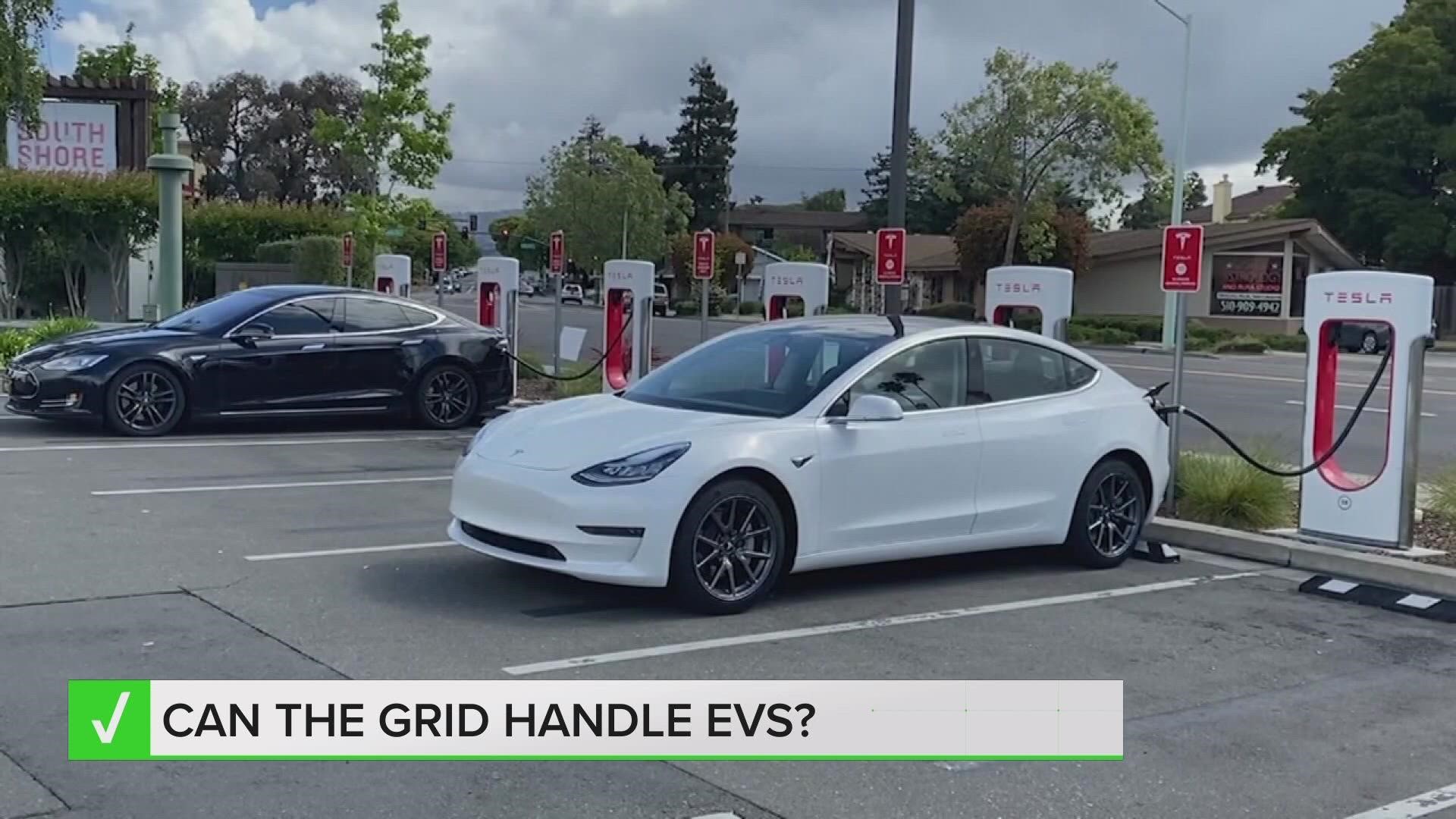MUSKEGON, Mich. — Michigan's public utilities estimate there will be between one and two million EVs statewide by 2030.
And as gas prices surge, thoughts increasingly turn to going without it and buying electric alternatives instead.
Is the grid ready to handle that challenge?
The 13 ON YOUR SIDE Verify Team turned to the experts.
THE QUESTION:
“Are energy companies and the grid ready to power a growing number of electric vehicles?”
SOURCES:
THE ANSWER:
Yes. While the electric grid wouldn’t be able to handle the strain of hundreds of millions of new EVs on the road all at once, according to experts, projects in the pipeline and the current pace of EV adoption will mean utilities will likely be able to keep pace with future energy demands.
WHAT WE FOUND:
“The short answer is yes,” Commissioner Tremaine Phillips of the Michigan Public Service Commission relayed. “We are being presented with a number of challenges… It would be a fairly scary scenario, if all ICE vehicles were to convert to electric vehicles overnight.”
In 2021, American utilities produced just over 1,100 terawatts of electricity for the grid.
What that means is if manufacturers replaced all just under 300 million ICE vehicles registered in the US with electrics right now and all of them charged at once, at 50 KW, it would exhaust US capacity by about 12 to one.
At least, that’s the theory.
“That's not the reality that we face,” Phillips said.
Experts say math makes the mistake of suggesting the transition would happen all at once and that everyone would, for some reason, plug-in together.
A breakdown put out by Forbes offers a reality check: again, assuming every vehicle were electric and used an average of about 3,900 kWh a year, they would exhaust only about a fourth of the country’s capacity over the same time period.
DTE and Consumers Energy seemed agreed with that assessment; for the time being, at least, there’s enough to go around.
“Most charging for electric vehicles will take place overnight,” Brian Wheeler, a spokesperson for Consumers Energy said. “That's really important, because overnight is the time that you can imagine in your own home or your business, overnight is where the electric grid is much quieter… ready and waiting to accommodate that growth.”
Even so, over time, all of those cars plugging in will entail more demand, which, in turn, will mean more electricity, by some estimates, around 25 percent more.
Experts suggest the transition will ultimately mean about $125 billion in upgrades by 2030.
Michigan’s utilities have said they’re up to the task.
“The energy that powers those cars will be clean and, at the same time, we're going to be building out enough solar to meet any increase in overall demand,” Wheeler said.
“This is not a false start any longer,” Phillips suggested. “The future is going to be electric, so we need to begin to plan today for 2030 and beyond… given that mutual opportunity there, I truly believe that we're going to be able to get what needs to be done.”
►Make it easy to keep up to date with more stories like this. Download the 13 ON YOUR SIDE app now.
Have a news tip? Email news@13onyourside.com, visit our Facebook page or Twitter. Subscribe to our YouTube channel.

